The Indigenous artists designing coronavirus masks
From celebrating culture to highlighting a suicide epidemic, Indigenous artists are creating masks with meaning.
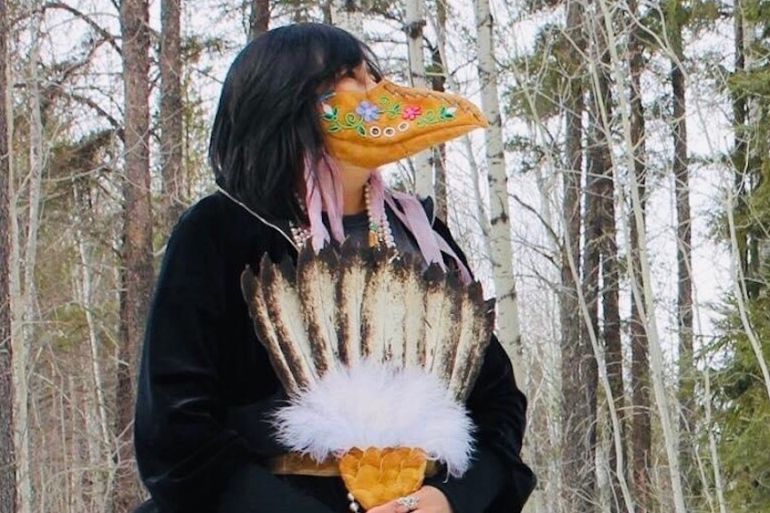
When Delores Gull was a little girl her grandmother taught her how to bead and sew. Ever since, creating art inspired by her Cree heritage has helped the 43-year-old mother of three navigate life’s ups and downs. So when the coronavirus pandemic struck, it seemed natural that she should turn those skills to making masks.
She began researching masks and grew fascinated with the long, beak-like masks doctors used to wear in the 17th, 18th and 19th centuries during outbreaks of the plague and other deadly epidemics. The masks were filled with aromatic scents like dried flowers, herbs or spices because the doctors – wrongly – believed they helped to ward off “bad air”.
Keep reading
list of 4 itemsMexico’s teachers seek relief from pandemic-era spike in school robberies
‘A bad chapter’: Tracing the origins of Ecuador’s rise in gang violence
Why is the US economy so resilient?
“When I saw the doctor plague masks they reminded me of our Sundance ceremonies we have here,” Delores explained, speaking by phone from her home in Ontario, Canada. “I thought to myself, ‘I have to make one’.”
The Sundance is a sacred Plains Indian ceremony, that was once banned by European colonisers, and which involves community members gathering to dance, sing and pray.
Delores says her culture influences everything she makes.
“Every time I come across smoked tan hide like moose or caribou, when I smell it,” she pauses to take a long, deep breath, “it drives me to make something.
“I believe I’m supposed to be carrying on this tradition of my culture and showing the world that our work is still alive.”
Delores’ mask features a long beak made from smoked, tanned caribou hide.
She packed traditional medicines from the land into the end of the beak to offset the stresses of dealing with the pandemic.
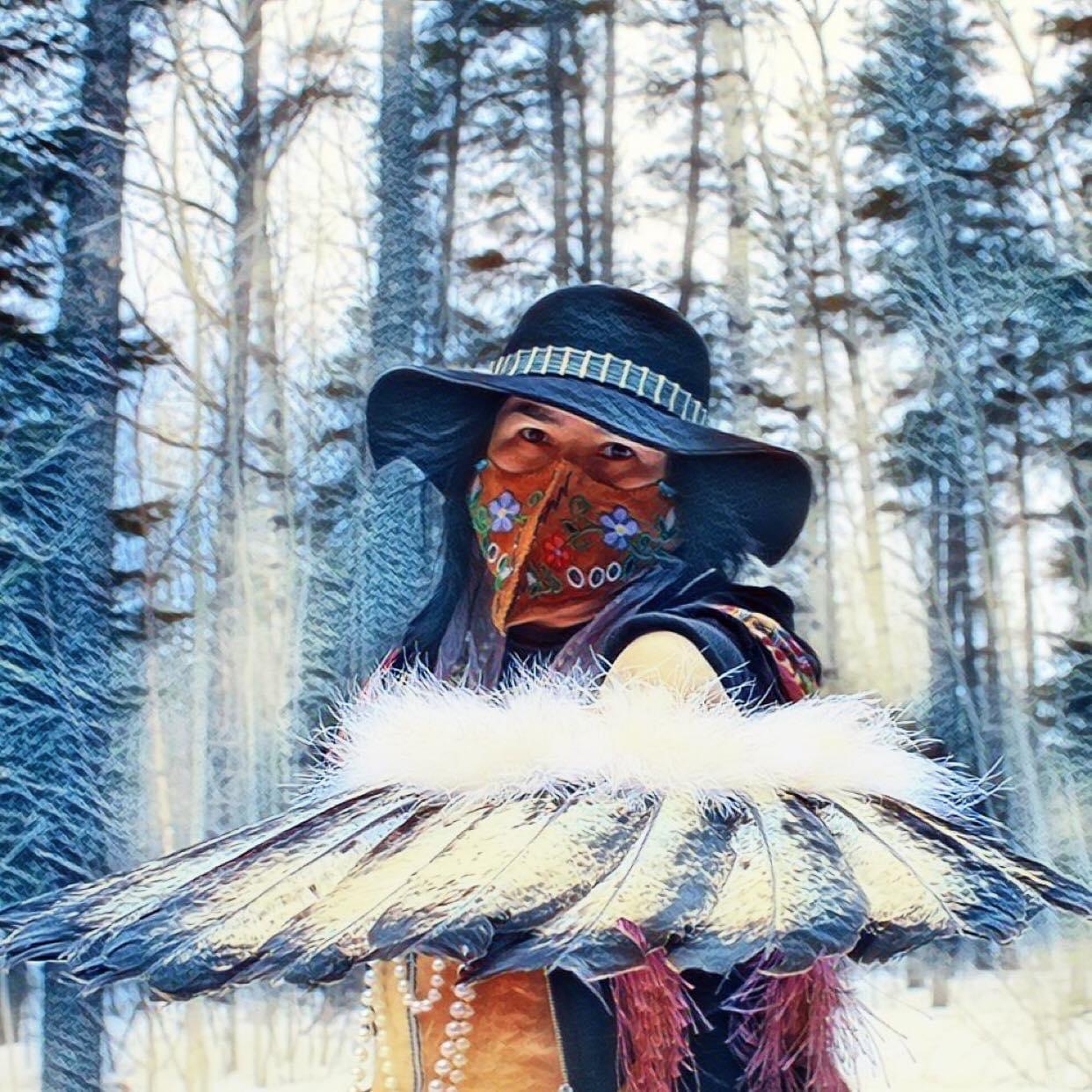
There is traditional flower beadwork intertwined with beading with symbolic meaning for Delores. A beaded thunder beam along the top edge of the beak is a reminder to keep balance, she says.
“The thunder represents lightning from above. That power reminds us to keep in balance.”
There are three circles on each side to represent breathing.
“This is to remember to take deep breaths. To keep life simple and not to complicate things.”
The mask is on display in her art studio. She says she has received several inquiries about creating custom-made masks but is currently backlogged with orders for the traditional multi-coloured ribbon skirts and other items she usually makes.
‘It feels like we are not a priority’
Two provinces west of Ontario, in the golden prairie lands of Saskatchewan, another Cree artist from the Lac La Ronge Indian Band has made an eye-catching mask.
Vanessa Hyggen, 38, lives in the city of Saskatoon. Her paintings of landscapes have been featured in various exhibitions across Canada.
She is inspired by nature, her culture and sustainability, she explains.
“The land has always nurtured us and now, as we all stay home, Mother Earth has a chance to breathe,” she says.
“Humans aren’t out running amok right now – we are being more thoughtful. The animals are coming out into spaces they don’t normally go. I heard our bear numbers are increasing up north because no tourist hunters are going there to hunt them.”
She says she wanted to create a tangible message and to document the pandemic in a way that would last forever.
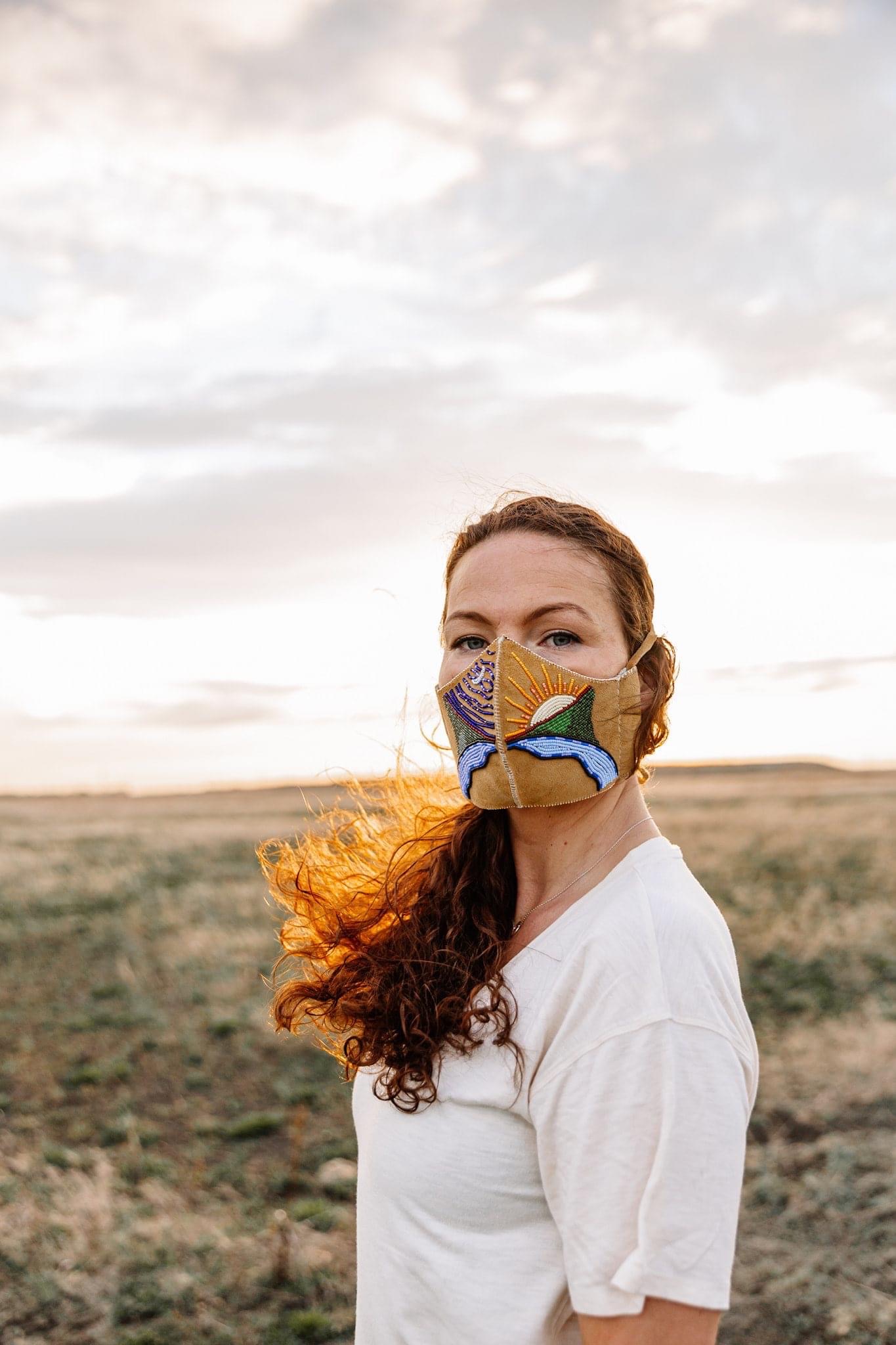
Her deer hide, beaded mask depicts a night and day landscape scene on either side with green grass and a river running through them.
“The day/night sides mean we are not escaping it [the pandemic]. It’s our reality for an unforeseen amount of time,” she explains.
“But I thought of the health of Indigenous Peoples and the relation to the river system. There’s a hospital in La Ronge, 20 minutes away from my reserve, but it’s already under-resourced.”
She discusses the discrepancies in the resources available to Indigenous communities and the resulting poverty, poor housing and inadequate access to healthcare and clean drinking water.
The design on her mask also represents the treaties signed between the First Nations and the Crown upon the founding of the nation of Canada. Those sacred agreements included clauses, such as one in Treaty 6, promising a medicine chest or in modern terms, medical care for First Nations.
“As long as the sun shines, the grass grows and the river flows,” was a binding promise made by the Commissioner of Treaty 6, Alexander Morris to indicate the everlasting nature of the Treaty.
However, many Indigenous people, including Vanessa, believe those treaty obligations have not been honoured by the government.
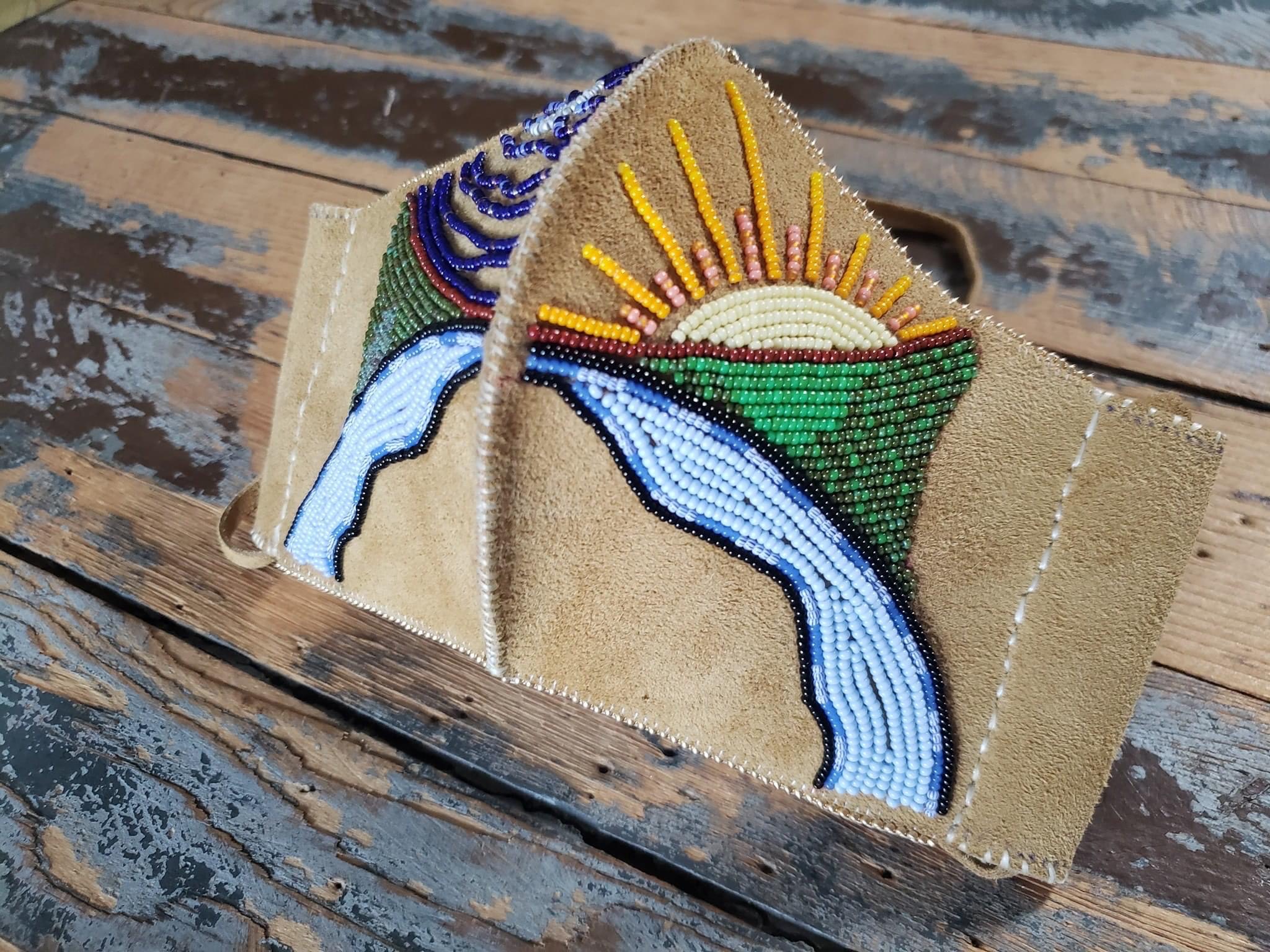
There is another ongoing epidemic Vanessa has been trying to draw attention to: Indigenous youth suicides.
In the autumn of 2019, the Makwa Sahgaiehcan First Nation declared a state of emergency after three children, one just 10 years old, committed suicide in three weeks.
According to Statistics Canada, suicide rates among Indigenous people are significantly higher than those of non-Indigenous populations.
“I feel frustrated with our current provincial government. We have young people in Regina asking the government to act on a youth suicide intervention bill, but the government recently voted it down. It feels like we are not a priority to them,” Vanessa says.
Even though the conversations her mask invokes may be tough, she hopes the beauty of the design will help offset that and inspire and inform people interested in Indigenous culture and the issues affecting Indigenous people.
“I’ve had pretty positive responses and it’s helpful for me during this stressful time,” she says.
‘Documenting history’
Meanwhile, high up in the Arctic community of Inuvik, North West Territories, Eliza Firth, 63, has also found comfort in crafting her response to the coronavirus pandemic.
Her moosehide mask features colourful silk embroidered flowers with tufted moose hair. Hanging beads are attached with porcupine quills on each side with red, black, yellow and white beads representing the colours of all humanity.
“This symbolises we are all in this together,” explains Eliza, who calls her piece the Delta Rose.
It took her a month to make. It was an emotional experience, she says, and one that will stay with her forever.

Eliza is Metis, a mix of Gwich’in and Scottish heritage. The Gwich’in live mostly above the Arctic Circle and are known for their craftsmanship.
It was during a two-week isolation period that Eliza was inspired to make a mask. She was feeling the effects of social isolation. Creating helped to take her mind off the severity of the pandemic.
But while she was making it, she began thinking about her mother, who survived a tuberculosis pandemic.
In the past, TB has devasted Indigenous communities in Canada. When Eliza’s mother caught it, she was sent thousands of kilometres away from home to an Indian hospital in Edmonton, Alberta, where she spent two years alone.
“It was a sad time in her life. My mother sewed while she was in the hospital to help her get through,” she says.
Eliza’s sister once spent time in a hospital being treated for hepatitis and experienced isolation too.
“I got emotional one evening. That feeling of loneliness just came over me. I thought of them (my mother and sister) and how they felt. I had to put it down,” she says of the mask. “[But] the next day I kept at it.”
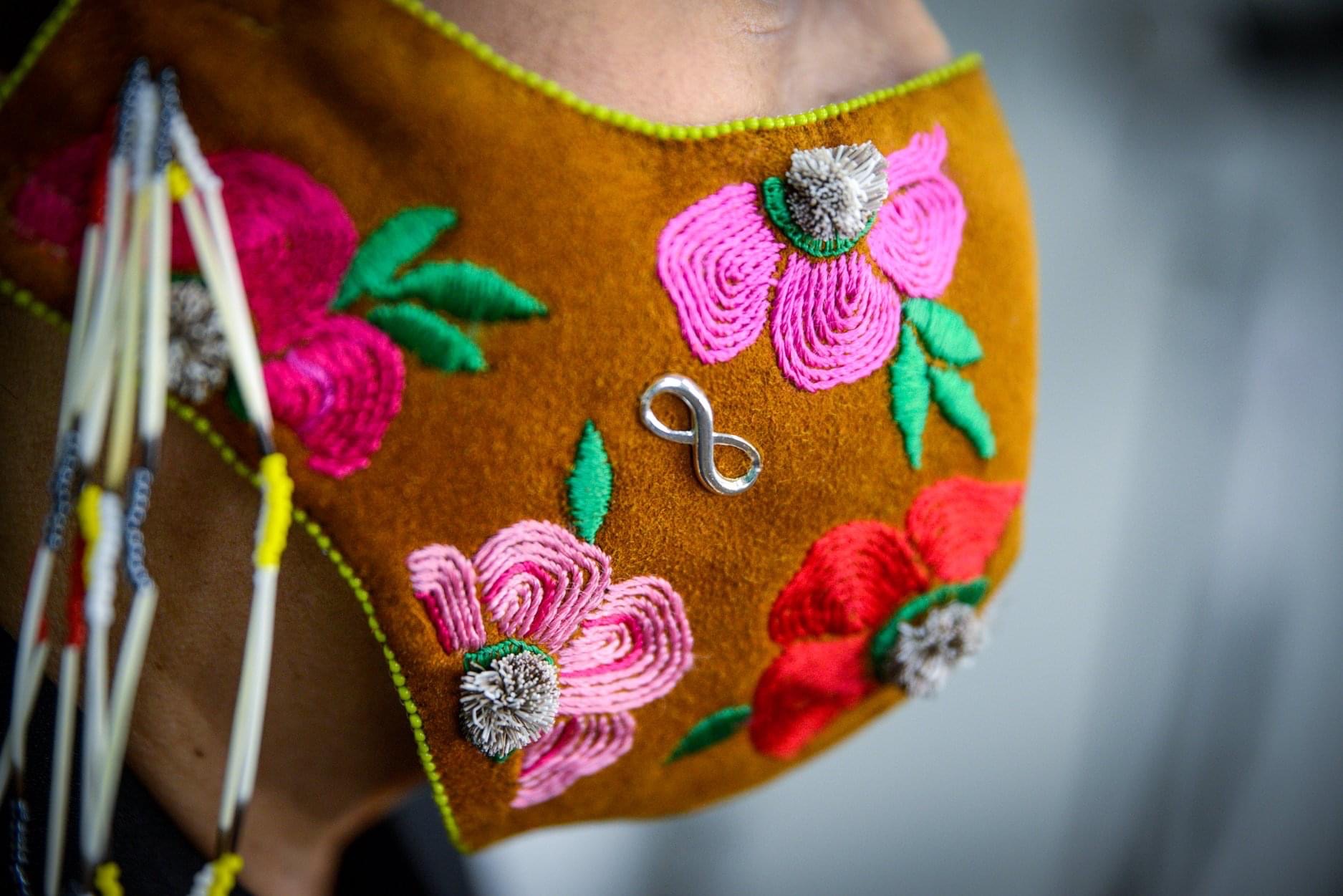
She stitched four tiny pockets to the inside of the mask. In them she tucked medicines including a mixture of pine needles, which when boiled and breathed in, is beneficial to the respiratory system.
She asked a local photographer to take her photo in her mask. Unbeknown to her, the photographer entered it into a Facebook contest. The mask was chosen among 49 to be featured in a Canada-wide exhibit that will travel across the country over the next three years.
But she says she will never make another pandemic mask again.
“I am wowed by the feedback. I guess I didn’t know the strength of this project,” she says. “It’s amazing and I’m very fortunate to be chosen for the exhibition. But I’ll never make one like this again. It was too much to go through for me. This was documenting history. I’ll leave it at that.”